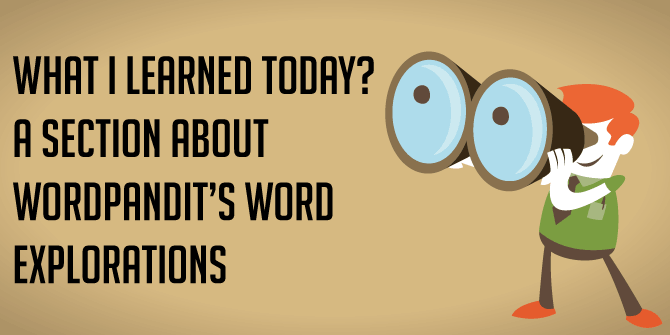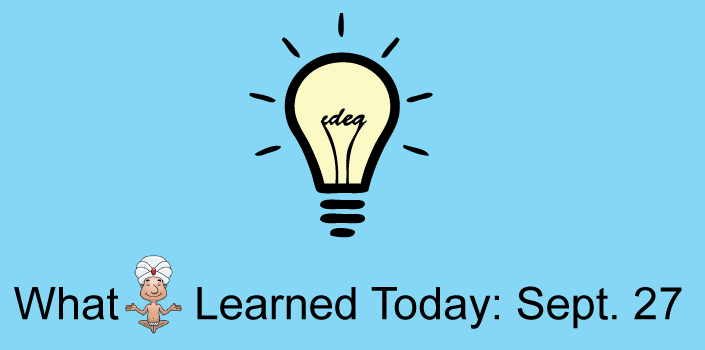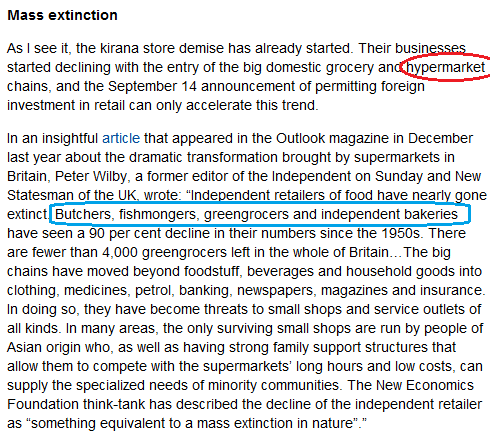 Why this section?
Why this section?
 To keep matters short and sweet, the answer to this question is very simple: Wordpandit himself keeps learning new things about the language everyday and believes that amount out there to learn is actually infinite. So the thought came to my mind: why not share what I learn every day, through the medium of a blog? This is an attempt for the same. Hope you appreciate this.
To keep matters short and sweet, the answer to this question is very simple: Wordpandit himself keeps learning new things about the language everyday and believes that amount out there to learn is actually infinite. So the thought came to my mind: why not share what I learn every day, through the medium of a blog? This is an attempt for the same. Hope you appreciate this.
I was reading an editorial on whether FDI should be allowed in retail, in India. And while reading that article, I arrived at today’s learning curve: the different type of stores that we are surrounded by today. I just started to think about them, and all I could see was the different names flying all around me: hypermarkets, supermarkets, mom-and-pop stores and list goes on. Coupled with that, I got a reference to the different types of retailers in the same article. This got me thinking. Why not delve into these definitions and see what they mean. This is Wordpandit’s learning for today: different types of stores and retailers.
First in the list come the ubiquitous super-markets. They are almost present everywhere these days, from major shopping districts to newspapers where their utility is being discusses. Personally speaking, I do not know whether these are good or bad for society, but I do know what this behemoth of shopping means: “A supermarket, a large form of the traditional grocery store, is a self-service shop offering a wide variety of food and household products, organized into aisles. It is larger in size and has a wider selection than a traditional grocery store, but is smaller and more limited in the range of merchandise than a hypermarket or big-box shop.”
Well, the definition above is courtesy Wikipedia. And it ends on a rather curious note: hypermarkets or big-box shop/store. Now what on earth does this mean?
Hypermarkets are defined as “In commerce, a hypermarket is a superstore combining a supermarket and a department store. The result is an expansive retail facility carrying a wide range of products under one roof, including full groceries lines and general merchandise. In theory, hypermarkets allow customers to satisfy all their routine shopping needs in one trip.” And now to add some spice to the mix, big-box shores are defined as : A big-box store (also supercenter, superstore, or megastore) is a physically large retail establishment, usually part of a chain. The term sometimes also refers, by extension, to the company that operates the store. The store may sell general dry goods in which case it is a department store, or may be limited to a particular specialty (such establishments are often called “category killers”) or may also sell groceries, in which case some countries use the term hypermarket.
If we have to get the basic definitions right, then in simple terms:
- Hypermarkets: provides variety and huge volumes of exclusive merchandise at low margins. The operating cost is comparatively less than other retail formats.
- Supermarkets: is a self service store consisting mainly of grocery and limited products on non food items. They may adopt a Hi-Lo or an EDLP strategy for pricing. The supermarkets can be anywhere between 20,000 and 40,000 square feet (3,700 m2). Example: SPAR supermarket.
- Big-box stores encompass larger department, discount, general merchandise, and warehouse stores.
Well, that does not bring us to an end for today’s learning. There are still 5 more types of stores you should know about:
Anchor Stores: A shopping centre anchor is a retailer around which the centre is built. It provides the initial power that draws customers to the centre.
Category killers or Category Specialist: By supplying wide assortment in a single category for lower prices a retailer can “kill” that category for other retailers. For few categories, such as electronics, the products are displayed at the centre of the store and sales person will be available to address customer queries and give suggestions when required. Other retail format stores are forced to reduce the prices if a category specialist retail store is present in the vicinity.
Mom-And-Pop : is a retail outlet that is owned and operated by individuals. The range of products are very selective and few in numbers. These stores are seen in local community often are family-run businesses. The square feet area of the store depends on the store holder. (basically family run small affairs).
Cash & Carry: A cash and carry retailer offers product assortment to professional customers at wholesale prices. Cash and carry outlets trade in a variety of products, which gives small-scale businessmen the opportunity to shop under one roof”.
Discount stores : tend to offer a wide array of products and services, but they compete mainly on price offers extensive assortment of merchandise at affordable and cut-rate prices. Normally retailers sell less fashion-oriented brands.
 Well, that does leave us with one type of store unaccounted for: convenience stores, the stores that have supplied infinite convenience to us in times of need. These are defined as:
Well, that does leave us with one type of store unaccounted for: convenience stores, the stores that have supplied infinite convenience to us in times of need. These are defined as:
Convenience stores: is essentially found in residential areas. They provide limited amount of merchandise at more than average prices with a speedy checkout. This store is ideal for emergency and immediate purchases.
Well, we have covered the different types of stores and I think the learning is pretty much sufficient for today. This covers the marker in red in the picture. We cover the types of retailers tomorrow. That would be some learning too.
Sources used and quoted extensively in the article:
http://en.wikipedia.org/wiki/Retail
http://thegoodpeople.se/blog/?p=46






